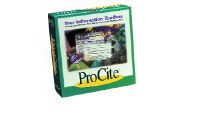Advertisement
Grab your lab coat. Let's get started
Welcome!
Welcome!
Create an account below to get 6 C&EN articles per month, receive newsletters and more - all free.
It seems this is your first time logging in online. Please enter the following information to continue.
As an ACS member you automatically get access to this site. All we need is few more details to create your reading experience.
Not you? Sign in with a different account.
Not you? Sign in with a different account.
ERROR 1
ERROR 1
ERROR 2
ERROR 2
ERROR 2
ERROR 2
ERROR 2
Password and Confirm password must match.
If you have an ACS member number, please enter it here so we can link this account to your membership. (optional)
ERROR 2
ACS values your privacy. By submitting your information, you are gaining access to C&EN and subscribing to our weekly newsletter. We use the information you provide to make your reading experience better, and we will never sell your data to third party members.
Physical Chemistry
Digital Briefs
New Software and Websites for the Chemical Enterprise
by Janet S. Dodd
October 24, 2005
| A version of this story appeared in
Volume 83, Issue 43
The following products were on display at the exposition during the American Chemical Society national meeting in Washington, D.C. This is part 2; part 1 was published last month.
Software

MDL Logistics manages reagent procurement and inventory processes. It provides access to an electronic collection of chemical supplier catalogs, the in-house inventory, and an electronic encyclopedia of product safety information and Material Safety Data Sheets. Research scientists can conduct searches to retrieve compounds; to view safety information; to configure user-specific purchase information such as preferred suppliers, cost center, project number, site location, and delivery preferences; and to view, register, transfer, edit, and dispose of containers. Environmental safety and health personnel and system administrators can manage access to regulated compounds, place restrictions on or apply certain actions to parts of the inventory, and control access to various substances. The software requires Windows XP Professional SP2 or higher and Windows Server 2003. MDL, www.mdl.com
SciFinder 2006 allows scientists who are exploring the CAS Registry of 26 million organic and inorganic chemical substances to retrieve similar substances to the one being searched. Similarity searching permits new options for identifying substances of interest via precise statistical analysis using the Tanimoto algorithm. New structure query tools to identify substances more precisely permit drawing a variable attachment point and a repeating group. Reaction searching features include reaction conditions and identification of intermediate reactions in a multistep reaction. Scientists can click on any substance in the reaction display to find additional information, including retrosynthetic pathways. Navigation and usability improvements include duplicate detection and removal. SciFinder is available for Windows and Macintosh computers. Chemical Abstracts Service, www.cas.org
IntelliChem V 5.0 intelligent electronic lab notebooks (iELN) for scientists and engineers are organized into five suites: Synthesis, Discovery, Formulations, Methods, and BioProcess. In addition, Universal ELN is a component of each suite. Features include the ability to record experiments while varying reagents or reaction conditions, to design and enumerate focused or full combinatorial libraries, to track results for each product in a single notebook entry, and to record formulation composition by various units of measure. Automated security settings, audit trail, and workflow management enable compliance with FDA 21 CFR Part 11. The software is compatible with Windows. Symyx, www.intellichem.com

Benchware 3D Explorer employs 3-D molecular visualization to provide state-of-the-art molecular graphics, user-friendly interfaces, and communication capabilities. Researchers can view, share, and understand complex molecular data such as protein-ligand crystal structures, docking results, molecular alignments, or other 3-D chemical information. Users need not be expert molecular modelers. The software provides a mechanism for modeling groups to readily share their models and results with chemistry and biology researchers. It is compatible with Windows. Tripos, www.tripos.com
Online
Science of Synthesis V 3.0 contains information on 18,000 generally applicable experimental procedures, including 180,000 reactions and 800,000 structures, for organic and organometallic synthesis. The information is presented in a logical hierarchy that is ordered according to functional group and product classes. This Web-based system is available through either the Internet or a customer's intranet and uses standard browser technology. Thieme, www.thieme-chemistry.com
JCE Digital Library (JCE DLib) collects and catalogs digital resources available on the Internet in the area of chemistry education. The items in the collections are not limited to those at JCE Online. JCE SymMath is a collection of Mathcad, Mathematica, Maple, and Matlab documents designed to help students learn mathematically intensive aspects of chemistry. DigiDemos is the Web-based version of the Journal of Chemical Education's Tested Demonstration feature. Web-based learning aids include Java applets, dynamic HTML pages, virtual reality documents, QuickTime and Flash movies, animated gifs, and applications that can be used over the Internet. Journal of Chemical Education, www.jce.divched.org/jcedlib
For Teachers
The Classroom Performance System (CPS) is a wireless response system that gives teachers immediate feedback from every student. Teachers can give multiple versions of tests and quizzes simultaneously, grade them in seconds, and record them immediately. Results can be exported to Excel, Word, PDF, or the CPS Gradebook. The automated assessment feature lets students answer test questions at their own pace while keeping track of answers and grades. Teachers can create their own lessons, including multiple choice, true/false, and both objective and subjective questions. Images and diagrams can be used to enhance the questions. CPS provides a nonthreatening environment that allows all students to participate. The software runs on Windows. eInstruction, www.einstruction.com
Digital Briefs is written by






Join the conversation
Contact the reporter
Submit a Letter to the Editor for publication
Engage with us on Twitter